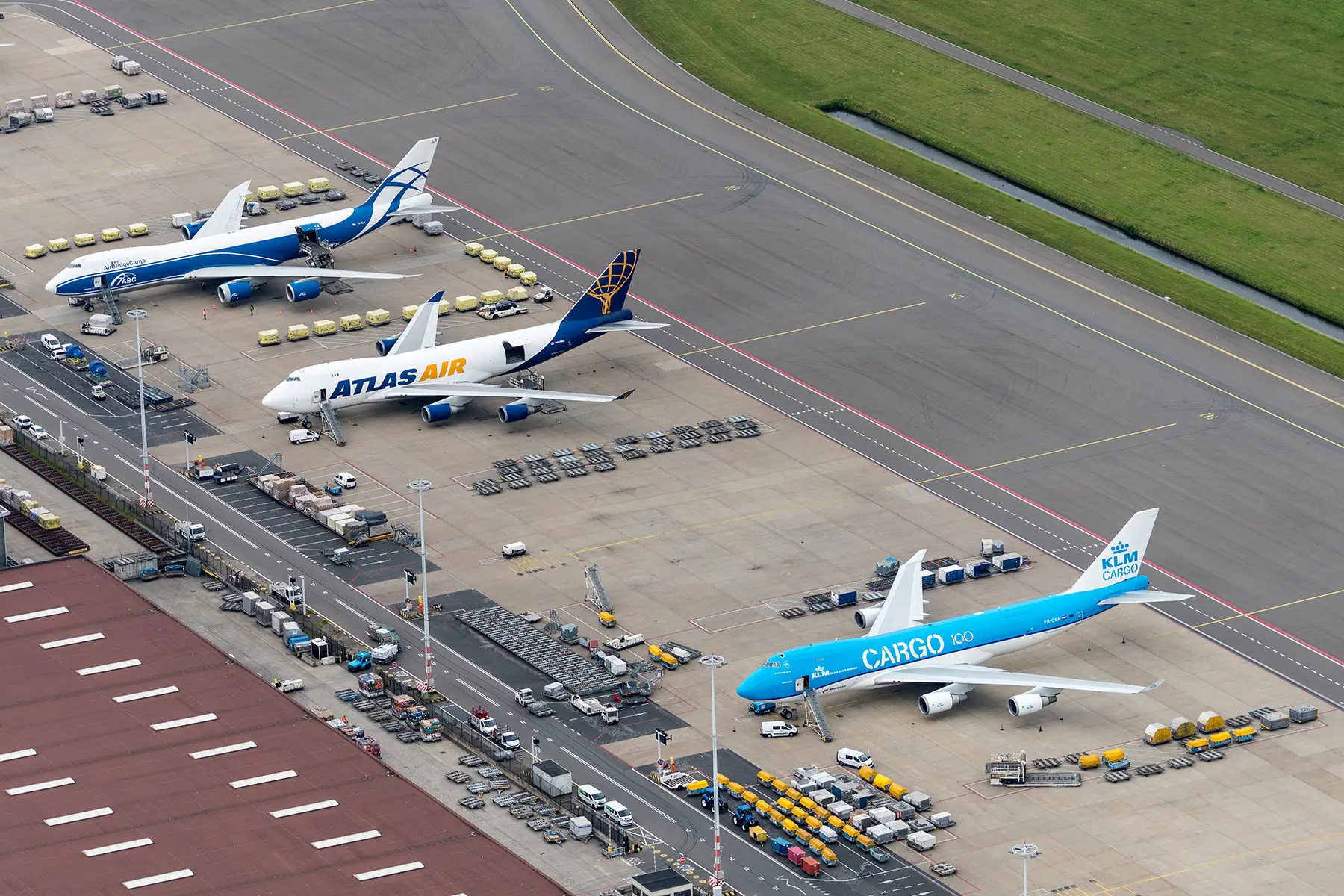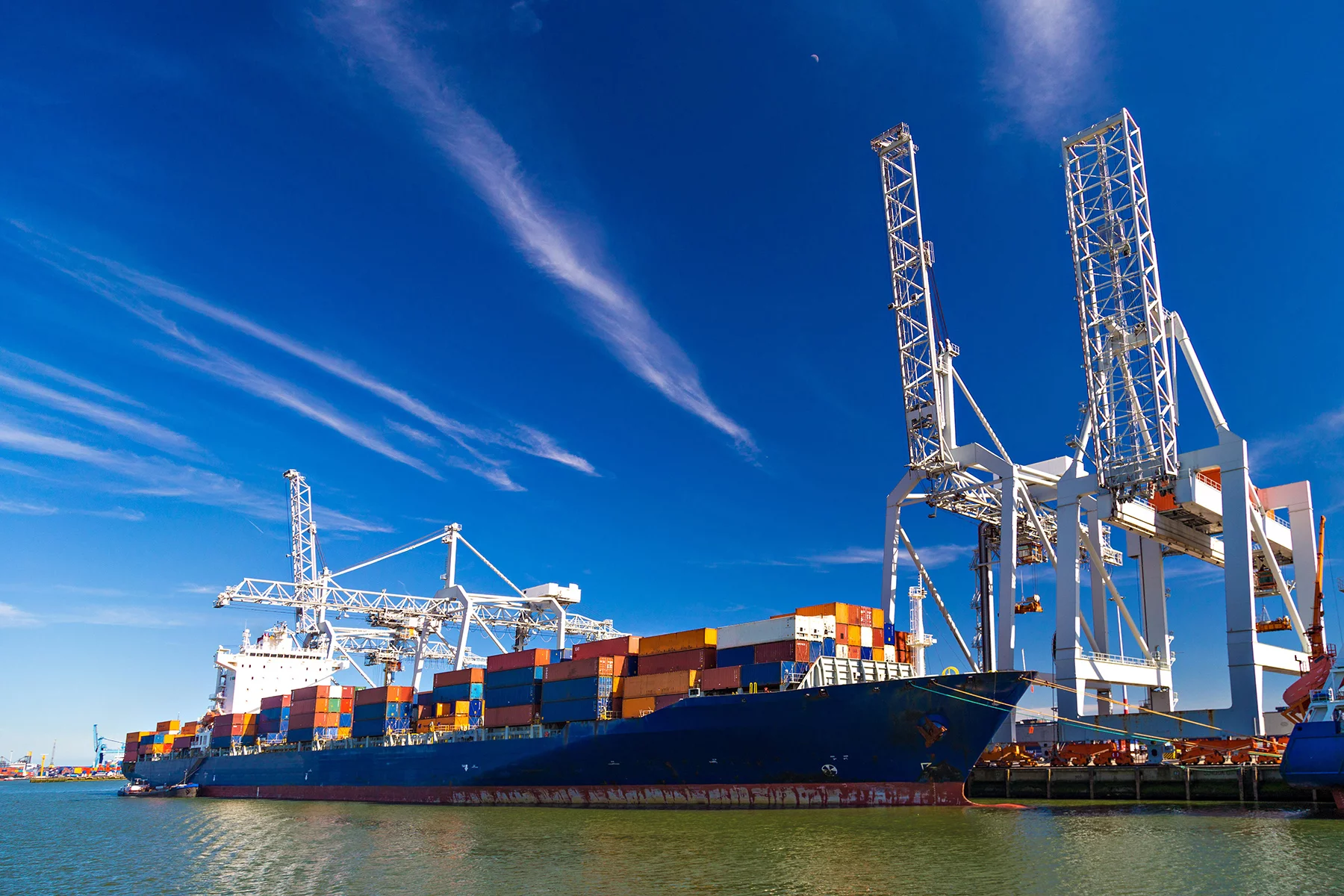The Netherlands is a small but lively country, especially if you’re moving to one of the major cities in the Randstad. If you’re moving to the Netherlands, sorting out your removals will likely be high on your to-do list. Thankfully, you have plenty of options. Indeed, the Netherlands is home to the Port of Rotterdam, the largest port in Europe, and Amsterdam Airport Schiphol, one of Europe’s busiest. These amenities, combined with excellent international road and rail connections, will make your move all the easier.
If you’re looking for tips for organizing your relocation to the Netherlands, you’ve come to the right place. We’ll outline the different ways to move your items, furniture, and vehicles and give you an idea of the timeframes and costs involved. You’ll be enjoying your first week in the Netherlands with a relaxing borrel before you know it. In this guide, you’ll find information on:
- Relocating to the Netherlands from abroad
- Moving to the Netherlands with air freight
- Relocation to the Netherlands with sea freight
- Relocating to the Netherlands by train and road freight
- Hiring an international moving company
- Relocating pets and vehicles
- Customs and importing goods into the Netherlands
- Useful resources
The Relocator
Going to Groningen or saying hello to Haarlem? Wherever you're heading, take the stress out of your move to the Netherlands by letting The Relocator find the right international shipping options for you. Compare a number of trusted international movers and get a free quote in minutes. Wherever Dutch life takes you, get there with The Relocator.
Relocating to the Netherlands from abroad
Arranging your relocation to the Netherlands might seem like a huge undertaking. For a start, you need to decide which belongings you want to move and what your budget looks like. Packing and getting your items to your destination can take a lot of work, so it’s a good idea to think about your priorities.

Cost is often the biggest worry. Relocation options vary significantly in price, depending on the transport method and how hands-on you want to be during the move. Furthermore, it helps to think about timing. If you’ve left everything to the last minute, you might find that sending your possessions costs far more.
To save time, you might consider hiring an international removal company. However, this largely depends on your budget. Global moving companies typically take care of any issues that arise, which is ideal for time-strapped expats. On the other hand, it adds costs to your move. An online platform can be an excellent place to start understanding what’s out there, such as:
This guide will explain your options for moving to the Netherlands in more detail and help you decide which removal option suits you. Also, don’t forget to visit our directory for listings of relocation companies operating in the Netherlands.
Moving to the Netherlands with air freight
The Netherlands’ largest airport is Amsterdam Airport Schiphol. As it’s a hub for international flights, this is likely where you’ll arrive if you come to the Netherlands from outside Europe. Other airports in the Netherlands include Eindhoven Airport, Rotterdam-The Hague, and Maastricht Aachen.
Amsterdam Airport Schiphol handles the third-largest amount of cargo in the European Union, so if you decide to ship your belongings by air, this is likely where they will arrive.

Who should use air freight?
Air shipping is usually the quickest way to get your belongings to your destination. If you’re living in the Randstad area, it’s likely to be very speedy, as Schiphol airport is well-connected to many of the Netherlands’ major cities. That said, the cost of moving by air can add up quickly, as prices are determined by weight. Therefore, it’s best saved for small, urgent items.
There are also environmental costs to consider. So if you’re trying to make your move as green as possible or want to live sustainably in the Netherlands, it’s best to choose another method.
How air freight works
When organizing your relocation to the Netherlands, your first step is to assess your belongings – work out their weight and volume. Once you have this information, you can approach different companies to determine how much they charge for a shipment of your specified weight. If you work with a door-to-door service, they will survey your belongings in person, or via video link, to give you a more accurate quote.
Remember that when you send your items abroad, you will need to deal with paperwork. Your delivery or removal company should be able to specify what’s required and assist you where necessary. What happens once your items arrive at your new home depends on your chosen service: you may wish to pick them up yourself from the airport, or have the removals company unpack them for you at your new home.
Air freight: Transit times
One of the main reasons to choose air freight is its speed. Your belongings will usually arrive within a week, so it’s great if you don’t want to wait. If you don’t have much to bring with you and you’re flying to the Netherlands, you could also pay for extra baggage and pick everything up from the baggage claim. However, be sure not to forget any customs and restrictions apply to your items.
Air freight rates
Although it’s quick, air freight is the most expensive way to send your items. Firstly, most companies that ship by air require a minimum shipment charge, usually around $150. Then, your items are charged by weight – prices start at about $1.50 per kilo and can reach $8 per kilo, depending on the route and demand.

Packing options for air freight
Whether you’re lugging the suitcases yourself or not, you’ll usually have the option to pack your own possessions. However, removal companies will usually insist on packing your items.
If you want to save money or make your move slightly more eco-friendly, pack your items in reusable cases or boxes. Many removal companies are beginning to use sustainable packaging, so if you’re not going the DIY route, check with them to find out what they have available.
Finding an air freight company
When moving to the Netherlands by air, you’ll first need to decide on what to bring. Once you know how much stuff you have and a rough idea of its weight, you can decide whether to hire a global relocation company or organize the move yourself. If you opt for the latter, you will need a service to ship your belongings by air.
Remember that your first quote won’t necessarily account for additional costs such as insurance and packing. Contact the companies directly to clarify a more accurate price with these costs included.
Relocation to the Netherlands with sea freight
If you’re not on a short deadline and have a large amount to remove, shipping your belongings to the Netherlands might be a good idea. The Port of Rotterdam is the largest in Europe, handling nearly 8.5 million containers per year. Because of this, Rotterdam is the main hub for international shipments to the Netherlands – as well as other European destinations. Other Dutch ports include the Port of Amsterdam, Port of Moerdijk, and Port of Den Helder.
Who should use shipping companies?
Let’s face it, sea freight is not the fastest mode of travel. However, it’s a good option if you’re moving to the Netherlands, as it has several large ports. If you’re moving from another continent, it’s particularly a particularly good way to keep costs down.

Furthermore, it’s typically more environmentally friendly than other methods. So if you are keen to make an eco-friendly move and don’t mind waiting to receive your possessions, it’s a good choice. The Port of Rotterdam also gives details of which routes are most CO2 efficient.
Container ships: how the process works
As with air freight, your first step will be to review your possessions and decide what to send by sea. In most cases, companies calculate the price for sea freight by size rather than weight.
You’ll also need to decide what type of container to use. There are three main options:
- Full container load (FCL), 20-foot container – fits the contents of a three-bedroom home
- FCL, 40-foot container – for contents of a four or five-bedroom house
- Less than a container load (LCL) – ship your belongings on pallets in a shared container
Shipping LCL is generally cheaper than sending a full container load, but it often takes longer than sending your own container. This is because it might take time for other shipments to fill the rest of the available space.
Freight shipping transit times
The timing for shipping to the Netherlands varies according to where you’re shipping from and current demand. In some cases, the journey only takes a couple of days, while it might take several weeks in others.
Here are some rough estimates from Routescanner for how long your sea freight might take to arrive in Rotterdam from abroad:
- United Kingdom: 2–3 days
- India: 17–23 days
- United States (west coast): 33–44 days
- United States (east coast): 9–13 days
- China: 25–33 days
- Curaçao: 17–19 days
Although the times shown on the website allow for transfers to other modes of transport, remember to factor in time for customs and unloading. Most companies suggest that you book your sea freight four to six weeks in advance.
Shipping costs
Shipping to the Netherlands will likely be your cheapest option if you’re moving from far away. It’s especially cost-effective for heavy items, as the price is determined by size rather than weight.

The cost of transporting your goods by sea depends on the route they take and levels of demand. In certain months, the price might be higher than others, so keep in touch with your shipping company to get an idea of how much you’ll spend. For example, the cost per cubic meter for ocean freight can range from US$25–140.
Packing for shipping freight
When you pack up for an overseas move, make sure your belongings are ready for stormy weather. Conditions on a ship can be both damp and bumpy. In addition, the move will likely involve multiple forms of transport, so pallets and packages need to be able to withstand some handling.
Some removal companies insist on packing your items themselves for insurance purposes. This is the case if you hire an international removals company. If you’re looking to make your packing eco-friendly, contact your removal company, as they will know which packaging will be most suitable.
Finding a freight company
When you have an idea of how much stuff you need to move and whether you’re going down the LCL or FCL route, it’s time to source quotes from freight companies. Of course, one way to do this is to fill out individual forms on shipping companies’ websites. You can, however, make your job a lot easier by exploring comparison platforms such as Freightos.
The Port of Rotterdam also displays companies that ship to the Netherlands, along with their contact details. In addition, our directory is full of relocation companies operating in the Netherlands.
Relocating to the Netherlands by train and road freight
The Netherlands is well-connected to the rest of Europe by road and rail, so it may be worth considering it for your relocation. Indeed, if you’re traveling from elsewhere in mainland Europe, your belongings will probably be moved overland anyway, regardless of which removals option you choose.

If you’re moving from the UK with a relatively small number of belongings, you might want to consider Eurostar, which links London to Rotterdam, Schiphol Airport, and Amsterdam. International train routes also connect the Netherlands with Belgium, France, and Germany. More destinations are available with a transfer. A standard ticket typically allows you to bring luggage, so it’s a convenient option if you’re only carrying a few personal items.
Hiring an international moving company
If you don’t want your move to turn into a full-time job, hiring an international relocation company is often the most convenient option. These companies usually handle all of the packing and shipping. This takes a lot of the pressure off – not only will they handle multiple methods of transport and pack your items safely, they often have years of experience with customs and inventory lists. Letting the professionals handle everything can give you peace of mind.
If you choose to work with an international relocation service, it’s worth getting in touch to find out which services they provide. Speaking to them directly can give you a clearer idea of timing and costs.
One way to make your move a little easier is to compare your options on a comparison site such as:
Finding the right international shipping provider can reassure you that the logistics are in good hands, allowing you to deal with the other details of your move. Check ahead of time to avoid any last-minute surprises.
How to choose an international relocation company
With so many global relocation services out there, you might be struggling to choose one. You should first check that the company is a member of industry organizations such as the International Federation of Freight Forwarders Associations or the International Air Transport Association.

A good shipping company should be experienced, knowledgeable, and transparent. It’s also a good idea to look online to read reviews of companies and find out from people who’ve already made the move which companies they’d recommend. Finally, make sure you speak to your company to find out exactly what the process involves, what paperwork is needed, and what will happen if something goes wrong.
DIY relocation versus using a relocation company
One way to save money is by organizing the move yourself, without outside help. This makes sense if you’re moving from a nearby country to the Netherlands and only want to bring a few essential items. However, if you have large pieces of furniture to move, there will be many more issues to consider.
If you choose to handle the entire move yourself, it’s essential to have an overview of what’s needed. Bear in mind that your move might involve multiple methods of transport, large amounts of administration, and heavy physical effort. So take into account the time and effort you’ll need to put in as well as the money you might save.
Relocating pets and vehicles
Keep in mind that your move will require good planning if you bring a car or pets to the Netherlands. Read on for an overview of what you’ll need.
Relocating with pets
It’s possible to bring a pet to the Netherlands, but make sure you follow the rules and regulations that apply. For example, pets from elsewhere in the European Union must have a pet passport; this gives information on the animal’s vaccines and recent clinical exams. In addition, your pet must be microchipped and vaccinated against rabies.

When flying to the Netherlands, your pet will travel in the hold or cabin, depending on its size and the length and origin of your flight.
Moving your vehicle to the Netherlands
Although the Netherlands is an excellent place for cycling, sometimes you need an extra two wheels. When bringing a car to the Netherlands, you might not need to pay any customs duties on it. This is the case for those moving from another EU country with their household vehicle. Bear in mind that you won’t be able to sell the car for at least a year after moving. You can apply for a Vrijstelling bpm (only available in Dutch). Find out how to get a Dutch driving license
Those moving from outside the EU can also import their vehicle tax-free as part of their household goods. However, this involves filling out a declaration and providing additional documentation. Read more about buying a car and the rules for driving in the Netherlands.
Customs and importing goods into the Netherlands
When you import your household items to the Netherlands, you’ll deal with Dutch customs (Douane). Thanks to freedom of movement, those moving from another EU country don’t need to declare personal goods at customs, as long as none of the items are on the exceptions list – which includes things such as domestic animals and cultural property.
If you’re moving from a non-EU country, you’ll need to declare your items to customs. If you’re moving to the Netherlands to live and work, you should be able to get an exemption for import duties, but check the complete list of conditions here (in Dutch). If you move with a removals company, they will need to do this for you. To apply, you’ll need a signed inventory list, a certificate of registration for the Dutch personal records database, and a document such as an employment contract, statement from your employer, work permit, rental contract, or mortgage certificate. If you’d like to import your car, you’ll also need a copy of its registration certificate.
Useful resources
- Dutch Customs (Douane) – information on what you may and may not bring to the Netherlands
- Dutch Tax Authority (Belastingdienst) – details on import costs and other tax issues to take into account when moving
- Immigratie- en Naturalisatiedienst (IND) – information about moving to and living in the Netherlands








